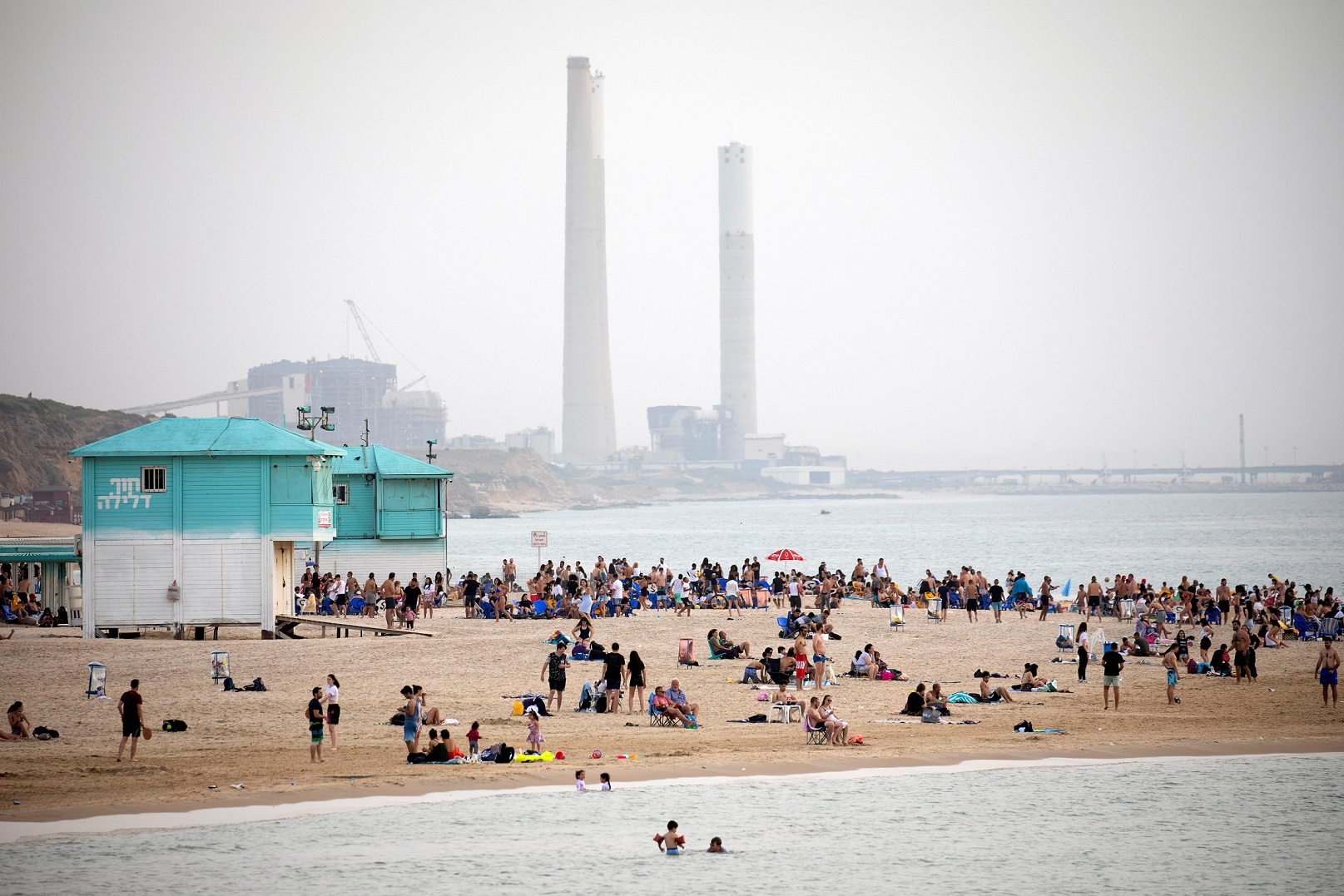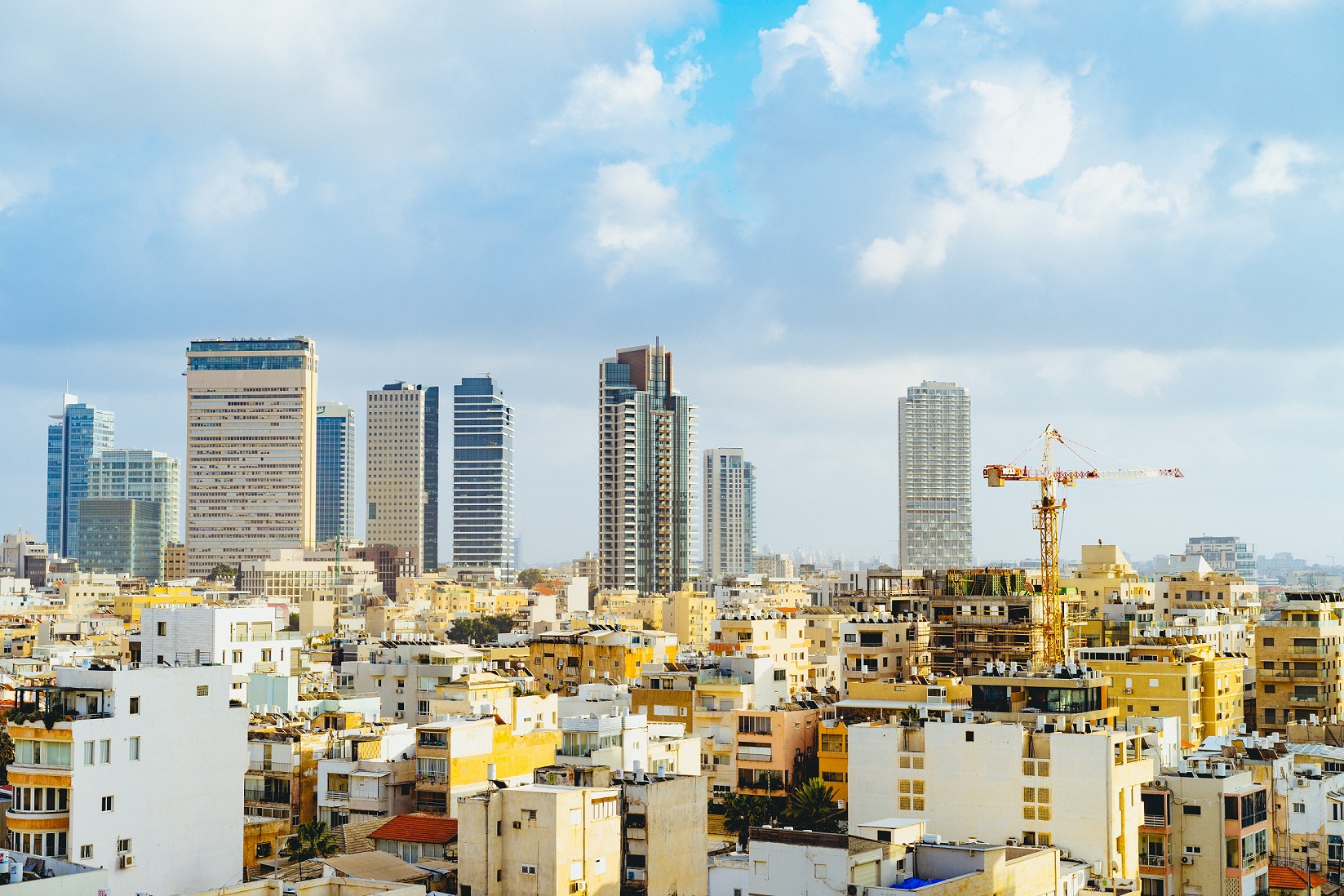Publications
INSS Insight No. 1517, September 13, 2021
The latest IPCC report shows that global climate changes of a few degrees have considerable impact, but local phenomena pack the same punch. The significance of the “urban heat island,” for example, is that urban spaces are on average 4-5 degrees warmer than the rural areas around them, creating oppressive heat, health problems, and increased energy consumption. In order to ensure that cities are prepared to withstand climate changes, Israel’s leadership should draw up plans that would enable local authorities to allocate resources toward appropriate action. Models can estimate the damage and costs of climate changes as the basis for allocating funds to promote processes of adaptation and urban resilience. An analysis conducted in Lebanon (in 2015) shows that the damage could amount to 0.5-1 percent of annual GDP by 2080. This estimate also indicates a potentially enormous economic opportunity, embodied in effective and timely preparation to face the challenge.
The sixth report by the Inter-Government Panel on Climate Change (IPCC), published on August 9, 2021, aroused much media interest worldwide, including in Israel, because of its ominous statements about the climate crisis. According to researchers, the target of limiting global warming to 1.5 degrees is already unattainable, and even the success of the current efforts to limit it to only 2 degrees Celsius by 2100 is in doubt. In fact it appears that the current course is leading to greater global warming.
The serious consequences of the warming include droughts and extreme weather patterns – storms, floods, heavy rain, extended heatwaves, high temperatures, and humidity – creating heat stress with health-related and damage implications for animal and plant life. Accordingly, decision makers at national and local levels should ensure proper preparation and adjustment, professionally termed “adaptation,” for the effects of climate change in order to protect countries and communities from harm.
Another phenomenon, with far more immediate effect on temperatures in areas where it exists, is the “urban heat island” (UHI). In the UHI, urban spaces heat up far more during the day than the rural areas around them, and cool down more slowly at night. This is largely due to heat storage in urban surfaces, the creation of heat by urban activity (motor traffic, activity in buildings), and the difficulty of reducing heat through wind or evaporation when air flows are blocked. The latest research on UHI shows that the difference amounted to an average of 4-5 degrees Celsius in some 400 cities that were studied, and at peak times could be over 10 degrees. Among the direct ramifications of the phenomenon is a significant rise in energy consumption (mainly for air conditioning) of 1-9 percent for each increase of 1 degree, plus health problems and even death due to overheating (some 10,500 deaths in the United States in the years 2004-2018).
UHI in Israel
Research on UHI shows that the phenomenon is also present in Israel. A comparison between two Tel Aviv neighborhoods revealed variations of 7-9 degrees Celsius between an area in north Tel Aviv with extensive plant cover and an area in the south of the city with little vegetation. Meanwhile, the average temperature of the whole city is on average 3.6 degrees Celsius higher than in the rural areas surrounding it. Another study conducted in Beer Sheva also showed a significant UHI in the town, amounting to 2.5-6.9 degrees in summer, depending on conditions, and about 3.5 degrees in winter. These findings indicate that cities have considerable impact on their ambient temperature, and urban planning has a material effect on UHI that could exceed the predicted scope of global warming in the 21st century.
For that reason, while it is vital for Israel to be part of the worldwide efforts to limit global warming (mitigation), it must also prepare to tackle the implications of the situation and local effects by means of adaptation. In this framework, it is important to devote efforts and resources to building resilience and the necessary skills at national and local levels, since most of the Israeli population lives in urban areas, which are predicted to be the focal point of a range of destructive climate challenges.
Some urban authorities in Israel have begun to draft plans for mitigation and adaptation to climate changes. Some cities are taking part in international urban initiatives, such as the C40 and the Rockefeller Foundation 100 Resilient Cities, which encourage international urban cooperation on climate issues. But there are considerable differences between the various cities in terms of the resources they can allocate, particularly in the absence of a guiding hand at the national level. Even the Israeli standard for green construction (IS 5281) that was introduced 15 years ago, intended to require energy rating and thermal insulation for buildings in Israel, was only voluntary for a long period. It was standardized and became binding only in 2020, and even now is still not implemented by all local authorities. Even when there is an attempt at government involvement, there are authorities that are left behind. For example, in 2020 the Ministry of Energy launched the “Me’itz” (accelerator) program to draw up action plans for local authorities in readiness for climate changes, but as of now only 12 cities receive assistance from Ministry professionals. Cities that can afford it, such as Tel Aviv-Yafo, have ambitious plans, such as the Urban Forest Plan to plant 100,000 more trees by 2030 to increase the city’s green cover.
There is clearly nothing wrong with individual local initiatives to promote adaptation and mitigation, and they are particularly important since local authorities have a lot of power to introduce and implement positive processes. However, climate changes are a threat to Israel’s national security, and it is therefore desirable for the state to play a more meaningful role in drawing up plans for adaptation, preparing national plans at all levels, and supporting inter-city coordination. In this context, academic researchers on climate and the environment recently wrote to decision makers in Israel, urging them to turn their attention to adaptation activities at local level. They argue that “the focus should be on immediate and urgent planning and execution of adjustments to changes and climate extremes at local level,” in order to reduce the impact of the changes on the health and safety of the population.
The starting point could be the creation of models to assess the costs of climate damage, as a basis for deciding on fund allocation for adaptative processes and building resilience in Israel. Such an analysis was conducted in Lebanon, and insights for Israel can be derived from it.
Economic Analysis: Lebanon as a Basis for Comparison
In spite of the enormous differences between the economies of the two countries, Lebanon can serve as a model for comparison for Israel on matters relating to the effects of climate change: the countries are in the same region, with similar topography, and both have large population concentrations along the coast. In 2015, the Lebanese Ministry of the Environment and the UN Development Programme (UNDP) published a study that examined the implications of the climate crisis for the Lebanese economy, assessing the various costs, including the costs of electricity production, loss of GDP, water, health, food prices, and more. The study claimed that in the case of a 2-degree rise in global temperature, the cumulative damage to the Lebanese economy by 2080 would amount to some $91 billion (in fixed 2015 prices), and in the most serious scenario of a 4-degree increase, which is becoming increasingly likely in view of the general foot-dragging in tackling the climate crisis issue, the damage to the Lebanese economy would be something like 0.7 percent of annual GDP on average, in other words, damage amounting to about a trillion dollars.

Israel’s economy is 8 times larger than Lebanon’s in terms of GDP, and the Israeli population is over 2.1 million larger than the Lebanese population. If the Lebanese model is valid for Israel for the similarities given above, then the cost to Israel of a rise of 4 degrees in temperature could reach 0.5-1 percent of annual GDP by 2080 (while average rates of growth in the years 2030-2060 are estimated at 1.9 percent by the OECD). Even if the Lebanese model is only partly applicable to Israel, it still illustrates the scope of possible savings/damage.
Significance and Recommendations for Israel
Over the next few years, Israel will become far more crowded than today due to population growth, as several urban centers – the central Dan and Sharon areas, Jerusalem, Haifa, and Beer Sheva – expand and probably merge. The combination of climate trends and population trends will increase the effect and intensity of UHI, and therefore forward thinking urban planning will have greater impact on the situation. It seems likely that the outcomes of tackling this aspect of global warming will yield benefits for the Israeli economy similar in scope to the negative outcomes of the climate crisis. Israel is now at a critical point for seizing the huge opportunity for savings. Therefore:
- It is essential to create an “Israeli model” for assessing the costs of global warming and UHI, as a basis for decisions on the issue. The Lebanese model can only serve as an approximate assessment.
- The urban areas have not yet become one contiguous bloc and there is potential for planning to minimize the effects of UHI, bringing long term benefits. This is particularly relevant when the Israeli government is dealing with a housing shortage, and there is also a need to renovate and upgrade infrastructures (transport, electricity, communications) which in any case require broad national attention at local levels.
- The effort must be led at the national level, to foster systemic learning and national implementation of the lessons, and to allocate the resources more effectively.
- It is essential to learn from the experience accumulated at the local level in Israel and elsewhere, including the need to provide shade in open urban spaces, plant trees, and manage surface water runoff.



